Domestic sewage pumping stations: types, design, installation examples
The topic of sewage can seem unpleasant only to an inexperienced homeowner and only at first glance. As soon as problems arise with sewers, their elimination becomes the most important task.
If the troubles with the drains are regular, it makes sense to revise the original project for errors. To eliminate them, you may need a sewage pumping station. We will tell you how to install, operate and maintain it.
The content of the article:
What is CNS?
SPS or sewer station is a device for forced removal of solid and liquid effluents. Such devices are most often used for industrial purposes.
But there are a number of SPS specially designed for domestic use. They are usually installed in private households with autonomous sewer or where it is necessary to ensure the transportation of waste to the riser of the centralized sewer system.
Models of household KNSs can differ markedly in appearance, but their device and principle of operation are quite similar. Such constructions are a sealed container designed to collect waste.
A high degree of tightness of the drive is an important requirement to protect groundwater from pollution by effluents. It provides a system of pipes, as well as a special pump designed for pumping fecal matter.
Works sewage pumping station as follows. Drains enter the storage tank. Using a sewage pump, wastewater, including solid accumulations, is transported through pipes for further disposal, for example, into a central sewer riser, into a tank of a sewage machine, etc.
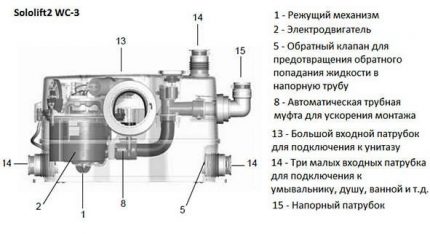
The pumping stations are equipped with pumps of various types, including submersible and surface console or self-priming ones.
Submersible, as the name implies, is lowered into containers with sewage. Usually these are very durable units that can operate in aggressive environments for a long time. For such pumps, there is no need to equip a place on the surface, just as additional pipes are not needed to connect them to the system.
But maintenance submersible pump may be somewhat difficult. The unit is cooled by the liquid in which it is located, such devices are not often needed for repair and maintenance. Moreover, submersible models of sewage pumps can work even in very cold environments. For them, the so-called dry installation is considered acceptable.
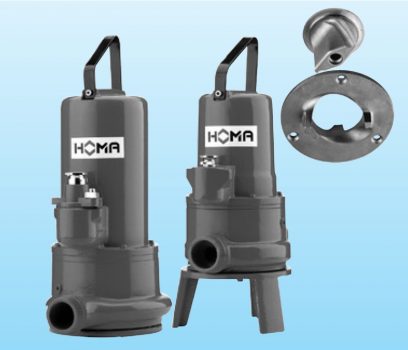
Self-priming pumps have a wide clearance for the passage of the pumped medium, they are recommended for use with substantially contaminated drains. An electric motor with a flange mount significantly facilitates the operation and maintenance of devices of this type.
Some species sewage pumps equipped with a special heating element. This allows you to use them even at temperatures below zero.
Console pumps are mainly used for industrial wastewater treatment plants. To install such a device, a freestanding foundation is needed. Console sewer pumps are considered extremely reliable and convenient, but it is better to entrust their installation and connection to an experienced specialist.
In domestic pump stations one or two pumps can be used, it all depends on the specific situation. If it is necessary to grind solid fractions of waste, use pumps with a cutting mechanism.
It should be understood that such a mechanism is not an omnivorous meat grinder. A piece of rag accidentally dropped into the drain can lead to serious blockage and even damage to the pump.
Special attention is paid to the so-called mini SPS - these are relatively small pumping stations designed to be connected to only one object, usually to the toilet.They are a complex of a small storage tank and a pump with a cutting mechanism. Such sewer stations are usually installed directly under the toilet.
Reasons for forced disposal of effluents
Typically, the removal of human waste from the sewer system occurs naturally under the influence of gravity. Unfortunately, it is far from always possible to practically organize this process at a sufficiently effective level.
Here are a few reasons why a homeowner should consider (or foresee) the installation of a forced waste disposal system:
- the situation is such that the level of the main sewage flow is higher than the waste discharge point;
- the waste discharge point is too far from the drain of the main sewage system;
- drains move too slowly through sewer pipes;
- sewage is often clogged due to errors made during its installation.
Some of these problems can be caused by flaws in the design of the sewer system or its improper redevelopment. But it also happens that, due to the peculiarities of the configuration of the building or the relief of the SPS site, it becomes the only choice for the normal operation of the sewer system. Sometimes install KNS it’s simply cheaper than completely redoing the sewer, eliminating the mistakes made earlier.
Additional elements for installation of KNS
KNS, as well as industrial sewer stations, are equipped with special float sensors placed in the storage tank. They transmit information about the level of sewage in the drive to the control unit. The pump turns on and off in automatic mode, which facilitates its operation and extends the service life.
In industrial models, such sensors are installed at four different levels. They reflect a safe state when the storage tank is practically empty, the levels at which the pump must be turned on or off, and also the level of overflow.
If the last set of float sensors is turned on, this indicates serious breakdowns in the system and requires immediate intervention by specialists.
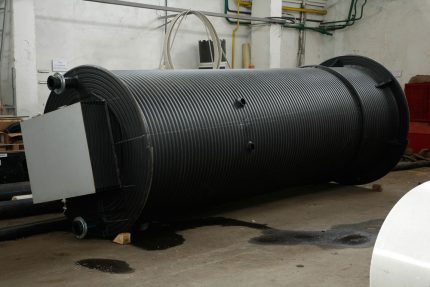
In addition to such sensors, it is also recommended that the SPS be provided with a backup power source and a manometer. Special pressure sensors may be required. An additional set of shutoff valves will not interfere.
The ground part of the pumping station is usually hidden under a metal pavilion, but other shelters can also be arranged. It should protect the device from the weather and unwanted extraneous interference in the operation of a complex of mechanisms.
Periodically, the pump itself, and connected to the SPS sewer pipes should be cleaned to prevent breakdowns and blockages. It is best to pre-purchase a set of special equipment that will facilitate the implementation of this task.Another important point is the manual control mechanism of the sewage pumping station.
In normal operation, it is not needed, since all devices turn on and off automatically. But manual control is very useful if the pumping station breaks or becomes clogged. When starting a new sewer station, manual control is also used.
Features of installing a sewer station
Installation of a pumping station is a laborious and rather complicated task. The capacity of the pumping station should be installed at the correct depth. Then the soil is poured around the tank and rammed so that its density is as close as possible to the natural density of the surrounding soil.

In general, the installation of a large sewage pumping station can be represented in the form of the following steps:
- Digging a pit.
- Laying a sand cushion.
- Tamping soil.
- Installation of storage tank in the pit.
- Accession of all pipelines necessary for the operation of the pumping station.
- Installation of sewage pump.
- Setting the operation of float sensors.
- Leading electrical cables, arranging grounding.
- Backfill and compaction of soil.
- Installation of a protective shelter.
The depth of the pit should be about half a meter more than the height of the storage tank with the cover. The fact is that the cover of the pumping station should protrude about one meter above the surface, but at the bottom of the pit should be laid a sand cushion one and a half meters thick. When determining the depth of the pit, these parameters should be taken into account.
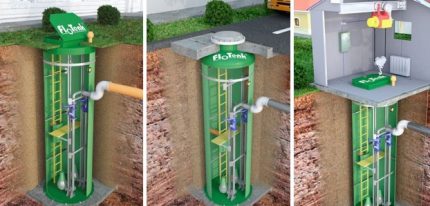
The width of the pit for the pumping station should be such that there is not only a tank that fits freely, but also a place for the necessary installation work. Of course, it does not make sense to dig out a too spacious foundation pit, this is simply unnecessary work.
The foundation pit is usually covered with layers of sand and each layer is compacted so that its density corresponds to the density of the surrounding soil by at least 90%.
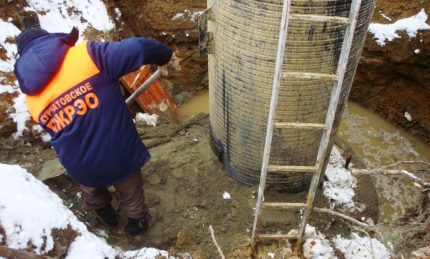
As mentioned earlier, float sensors set at four levels:
- normal degree of filling - 0.15-0.3 m from the bottom of the tank;
- the shutdown level of pumping equipment is 1.65-1.80 m;
- the level at which the sewage pump turns on is approximately 3.0-3.5 m;
- capacity overflow level - 4.5-5.0 m.
After all the elements are installed, it is necessary to check the operation of the system.
To do this, you need a certain amount of ordinary clean water. The liquid can be taken from a water supply system or an autonomous water supply source. If, for some reason, this is not possible, water is simply brought into the tank.
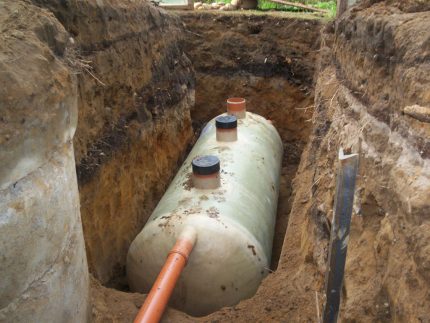
For verification, water is fed into the storage tank until it is full, then the water is drained into the sewer. At the same time, they monitor the operation of float sensors and the operation of pumping equipment, which should turn on and off in automatic mode.
All connections are checked for leaks at the same time. If a leak is detected, re-seal the joints.
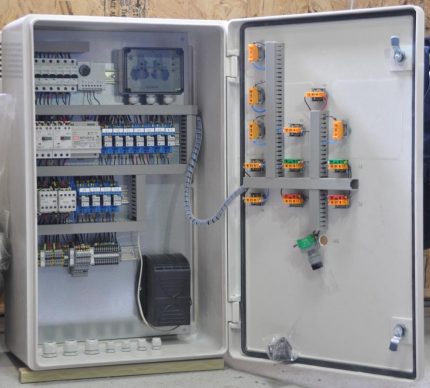
The order of service KNS
The operation of any device depends on timely maintenance, and sewer stations are no exception. Do not wait until the breakdown becomes apparent, it is better to conduct routine inspections in a timely manner.
Such prudence can subsequently result in significant savings, since small and large repairs vary markedly in price.

Before starting preventive maintenance work, the sewer station should be stopped and disconnected from the power supply. Then you need to completely release the pressure inside the system, and also wait until the device has completely cooled down. For work, you will need working clothes, as well as other protective equipment: a respirator, glasses, gloves, etc.
When servicing domestic sewage pumping stations, it is first recommended to visually inspect the device, check the operation of the shutoff valves. Then evaluate the condition of the pumps.
Problems can be indicated by too much noise during the operation of pumping equipment. Another alarming phenomenon is too much vibration of the pump during operation. If there are such dangerous signs, the pump can be removed, flushed, cleaned, checked its operation and installed again in the pump station.
Indicators are also evaluated on the control panel. Since solid particles of waste can accumulate inside the tank in the form of sediment, periodic washing of not only the pump, but also the accumulator is performed.
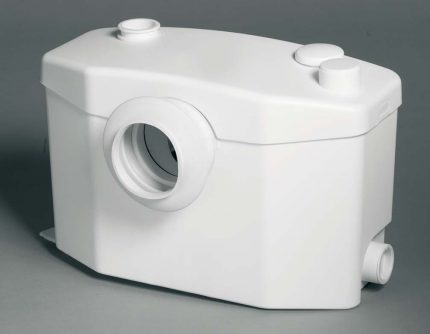
To do this, use ordinary water. It can be fed with a hose. Conventional household brushes can be used to remove contaminants from the inside of the drive.
But the use of household chemicals in such situations is not recommended. During flushing, care must be taken to ensure that water under pressure does not get on the pressure gauge or control panel.
Sewage pumps in such installations are usually mounted on a special pipe coupling. When carrying out preventive cleaning and flushing, it is important to correctly disassemble the pump from such a coupling, and then make sure that the device is correctly installed again.
Another important site is the trash collector. It should be inspected and cleaned. During the test, all connections are checked for leaks. All fasteners should be tightened with a wrench.
Features of the operation of sewer stations
When choosing a sewer station suitable for your home, remember that different models are designed for different operating conditions. For example, a mini SPS designed to be connected to a toilet should not be used to remove drains from a kitchen sink or from a bathroom.
In addition, if mini cns designed to be connected to a standard toilet bowl; most likely, it cannot be used together with a suspended toilet model. The proper operation of a sewage pump equipped with a solid waste shredder deserves careful attention.
Some owners believe that if there is such a function in the pump station, then any solid garbage can be sent to the sewers. This is a dangerous fallacy. Of course, if some garbage, for example, personal hygiene products, gets into the toilet, the chopper will easily process them.
However, it is not designed to withstand this kind of load constantly. The chopper should process mainly fecal waste having a completely different density, it can not be used as a garbage disposal.A large number of contaminants not intended for this equipment can quickly disable it.
Before purchasing a specific model of SPS, it is necessary to carefully familiarize yourself with its passport and technical specifications. Particular attention should be paid to the operating conditions of the device, for example, what temperature the effluent is designed for.
Wastewater from a kitchen sink, bathroom, shower, as well as from an automatic washing machine or dishwasher can be quite hot. In order for the grease of the kitchen drains not to penetrate the system and create problematic congestion in it, it is advisable to put grease trap.
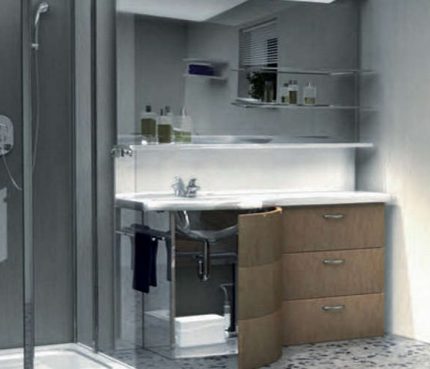
The permissible effluent temperature set by the manufacturer for each specific model must be taken into account. So, sewage pumping stations, into which warm, but not too hot wastewater can be drained, are suitable for connecting to a shower cabin, bathtub, toilet bowl, bidet, kitchen sink, etc.
However, if you have an automatic washing machine, you should choose a model of a sewage pumping station for the house, into which you can drain waste water with a temperature of 90 degrees or higher. It should be borne in mind that the mode of operation of such a technique usually involves boiling.
All this also applies to the dishwasher, from which almost boiling liquid can enter the drain. In addition to the current needs of the house, you should evaluate your plans so that you do not have to buy and install a new sewer station.
If you intend to purchase a dishwasher in the future, it is best to immediately choose the SPS designed for drains with high temperature.
Pay attention to the number and location of pipes. For each new household appliance that needs to be connected to the sewer system, which may appear in the future, there must be an appropriate pipe. Otherwise, it simply has nowhere to connect.
Conclusions and useful video on the topic
An overview of the compact toilet sewer station is presented here:
This video schematically depicts the installation process of a large SPS:
Sewer station can significantly improve life in the house. It is important to choose the right model of SPS and correctly install it. Proper operation and regular maintenance will ensure that there are no problems with this useful device for many years.
Want to talk about installing a sewer station in your suburban area? Any useful information worth sharing with site visitors? Please write comments, ask questions, leave posts with your opinion on the article and thematic photos.

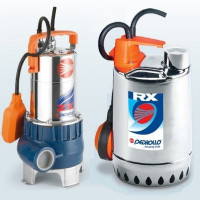 Sewage pumps: types, how to choose the right + operating features
Sewage pumps: types, how to choose the right + operating features  Sewer pump station (KNS): types, device, installation and maintenance
Sewer pump station (KNS): types, device, installation and maintenance 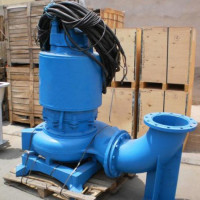 Types of fecal pumps: how to choose the right equipment for your needs
Types of fecal pumps: how to choose the right equipment for your needs 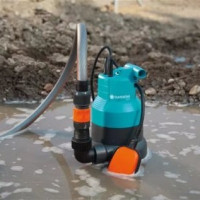 How to choose a fecal pump for a summer residence: an overview of the types and rules for selecting equipment
How to choose a fecal pump for a summer residence: an overview of the types and rules for selecting equipment  Cesspool pump: selection tips + review of the best brands
Cesspool pump: selection tips + review of the best brands 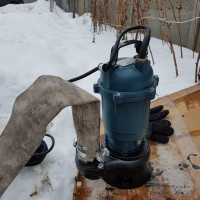 Fecal pump with grinder: selection tips and an overview of the best brands
Fecal pump with grinder: selection tips and an overview of the best brands  How much does it cost to connect gas to a private house: the price of organizing gas supply
How much does it cost to connect gas to a private house: the price of organizing gas supply  The best washing machines with dryer: model rating and customer tips
The best washing machines with dryer: model rating and customer tips  What is the color temperature of light and the nuances of choosing the temperature of the lamps to suit your needs
What is the color temperature of light and the nuances of choosing the temperature of the lamps to suit your needs  Replacement of a geyser in an apartment: replacement paperwork + basic norms and requirements
Replacement of a geyser in an apartment: replacement paperwork + basic norms and requirements
I had this situation in the basement made a gym. I wanted to organize a shower and a toilet there, so as not to run upstairs. It turned out that this is not so simple, because the level is lower than the main pipe. I had to pay a considerable amount for my “Wishlist”, I bought KNS, and they are not cheap. Plus, not every plumber understands these devices.In addition, a couple of times a year, you need to call the master to prevent the system.
I have the same situation, I want to arrange a billiard room in the basement and, in order not to be distracted, I have a toilet and a wash basin.
The master rests that this is unrealistic, wrong and impossible; the sewage system will not merge.
I read it here, I realized that all this is possible, there would be a desire and skill, there is plenty of equipment for this. Probably, I will take the Grundfos pump station, sort of a reliable company.